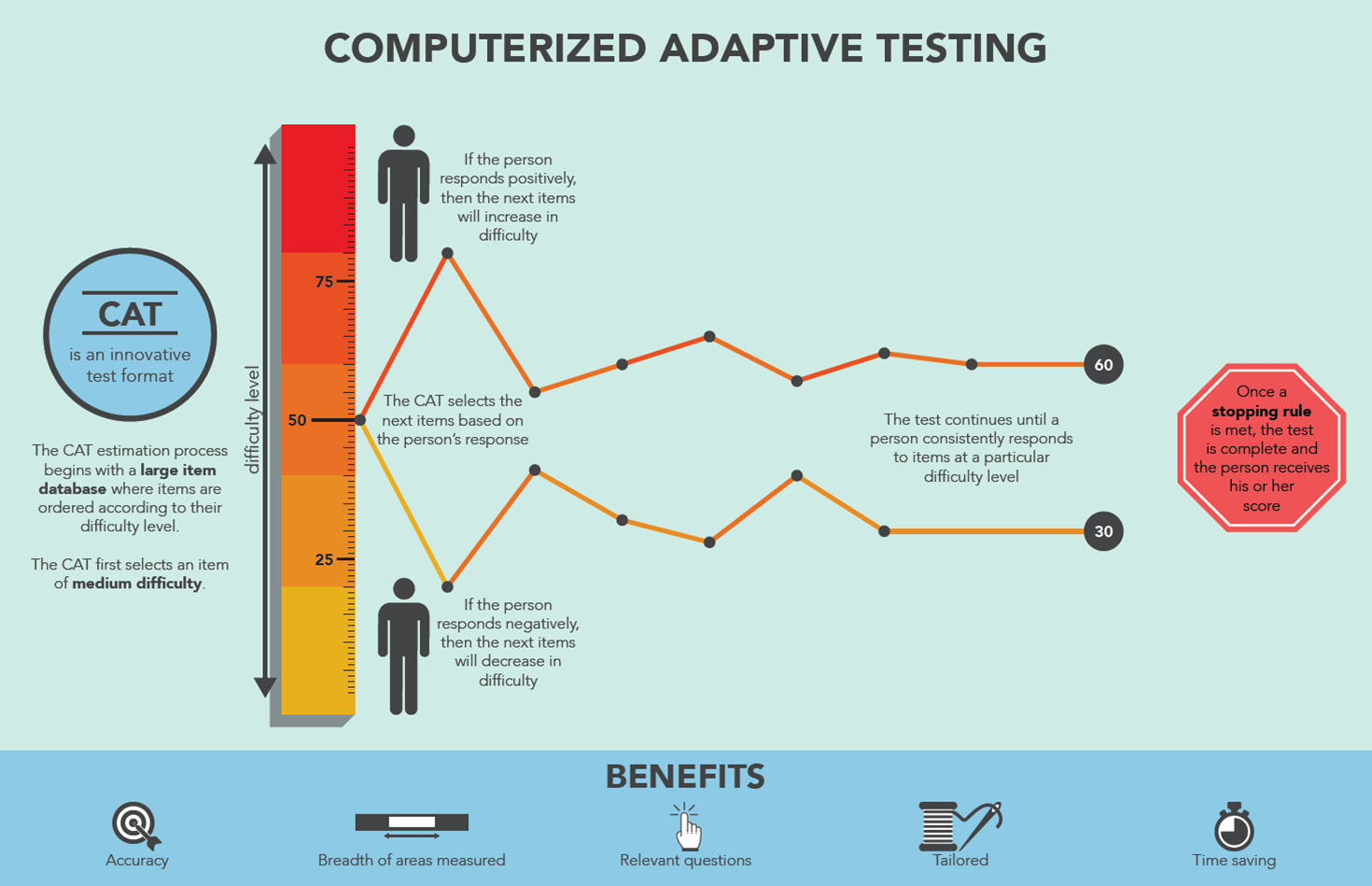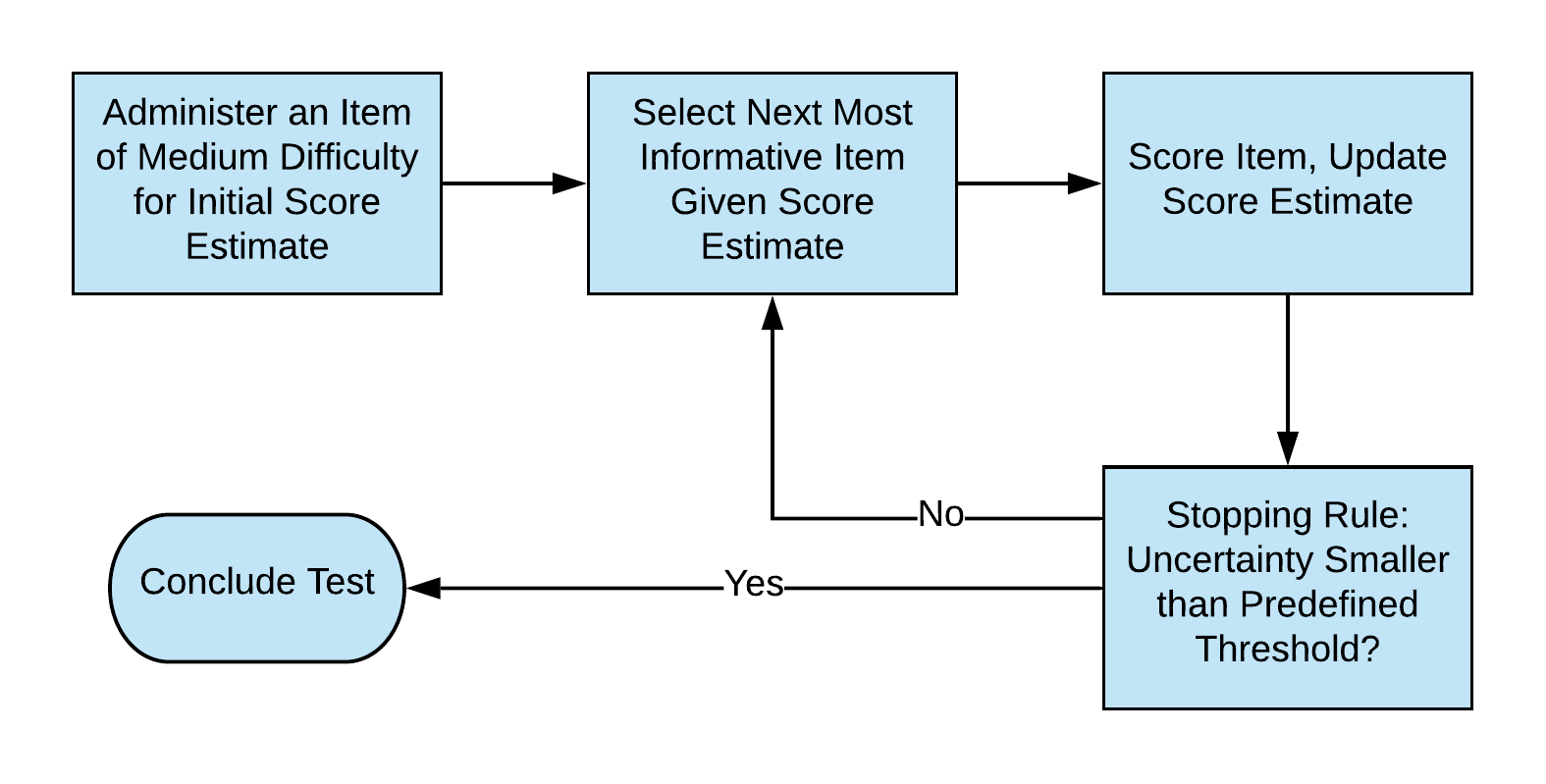In today’s digital world, computer-based assessments have become more prevalent than ever before. And one of the most popular types of computerized testing is the Computer Adaptive Test (CAT). A computer adaptive test is a unique testing system that adapts to the skill level of the test-taker, providing a personalized and dynamic testing experience. This type of testing has gained immense popularity in recent years, thanks to its ability to accurately gauge a student’s knowledge and understanding of a subject.
In a CAT, the difficulty level of the test questions is continuously adjusted based on the test-taker’s responses. If the test-taker answers a question correctly, the next question will be more challenging. Conversely, if the test-taker answers incorrectly, the next question will be easier. This process continues until the system accurately determines the test-taker’s ability level. As a result, a computer adaptive test provides a more accurate assessment of a test-taker’s knowledge and understanding of a particular subject, making it an essential tool for educators and students alike.
A computer adaptive test (CAT) is an automated test that adapts to the examinee’s ability level. It begins with a moderate difficulty question and, depending on the answer, adjusts the difficulty of the subsequent questions. This process continues until the test is complete. CATs are designed to provide a more accurate assessment of a person’s ability level by eliminating the ceiling and floor effects of traditional tests. CATs are commonly used in educational, psychological and professional testing.

What is a Computer Adaptive Test?
A computer adaptive test (CAT) is an assessment that uses a series of multiple-choice questions to measure a student’s knowledge and ability on a particular subject. CATs are typically used in educational settings to measure student achievement and provide feedback on student performance. Unlike traditional paper-and-pencil tests, computer adaptive tests are administered and scored electronically, allowing for more accurate and efficient assessment.
How Does a Computer Adaptive Test Work?
Computer adaptive tests adjust the difficulty of each question based on the student’s responses to previous questions. As the student answers a question correctly, the test increases the difficulty of the next question. Conversely, if the student answers a question incorrectly, the test will decrease the difficulty of the next question. This means that the student is presented with questions that are best suited to their current level of knowledge.
In addition to adjusting the difficulty of the questions, computer adaptive tests also provide immediate feedback to the student. After each question, the student is given feedback on the correctness of their answer. This provides the student with an opportunity to learn from their mistakes and further develop their understanding of the material.
Benefits of Using Computer Adaptive Tests
Computer adaptive tests offer several advantages over traditional paper-and-pencil tests. First, CATs offer more accurate and efficient assessment of student knowledge and ability. By adjusting the difficulty of the questions based on the student’s responses, CATs are able to provide an accurate measurement of the student’s current level of knowledge. In addition, CATs are able to provide immediate feedback on the student’s performance, allowing for a learning experience that is tailored to the individual.
Furthermore, CATs are less time consuming than traditional paper-and-pencil tests. The adaptive nature of the test means that the student is not required to answer a predetermined number of questions. This can result in a significant reduction in the amount of time required to administer the test. In addition, CATs can be administered electronically, which eliminates the need for paper-based tests and reduces the amount of time required for scoring and analysis.
Finally, CATs can be used to assess a wide range of topics. This allows for greater flexibility when designing tests and more reliable assessment of student knowledge and ability. Additionally, CATs can be tailored to the individual student, allowing for a more personalized assessment.
Frequently Asked Questions
Computer adaptive tests (CATs) are computer-based tests that adjust the difficulty based on the test taker’s performance. They are commonly used to assess a person’s knowledge, skills and abilities.
What is a Computer Adaptive Test?
A computer adaptive test (CAT) is a type of computer-based test that adjusts the difficulty of the questions based on the test taker’s performance. This type of testing is used to assess a person’s knowledge, skills and abilities. CATs are typically administered online, and the test taker is presented with a question and a set of possible answers. The test taker is then asked to select the answer that best fits the question.
The difficulty of the questions is determined by the test taker’s performance on previous questions. If the test taker answers a question correctly, the next question will be slightly more difficult. If the test taker answers a question incorrectly, the next question will be slightly less difficult. This approach allows the test taker to progress through the test at their own pace, while still ensuring that they are being presented with questions that are at an appropriate difficulty level.
What are the Benefits of Taking a CAT?
CATs provide several benefits to both the test taker and the test administrator. For the test taker, CATs are typically more efficient than traditional paper-and-pencil tests, as they require less time to complete. CATs also provide more accurate results than traditional paper-and-pencil tests, as the questions are tailored to the individual test taker’s performance.
For the test administrator, CATs are generally less expensive than traditional paper-and-pencil tests, as the tests are administered online and no physical materials are required. CATs also provide more accurate results than traditional paper-and-pencil tests, as the questions are tailored to the individual test taker’s performance.
What is the Difference Between a CAT and a Standardized Test?
The main difference between a CAT and a standardized test is how the questions are administered. A CAT is an adaptive test, which means that the difficulty of the questions is adjusted according to the test taker’s performance. A standardized test is a fixed-format test, which means that all test takers are presented with the same set of questions in the same order, regardless of their performance.
CATs are typically more efficient and provide more accurate results than standardized tests. However, standardized tests are typically more cost-effective and easier to administer.
Are CATs Used in Education?
Yes, CATs are commonly used in education. CATs are used to assess a student’s knowledge, skills and abilities in a variety of subjects. They are also used to evaluate a student’s progress over time. CATs are typically administered online, and the results are instantly available to the test administrator.
CATs provide several benefits to educators. They are typically more efficient and provide more accurate results than traditional paper-and-pencil tests. They also allow educators to track a student’s progress over time.
What is the Difference Between a CAT and an IQ Test?
The main difference between a CAT and an IQ test is the purpose of the test. A CAT is typically used to assess a person’s knowledge, skills and abilities in a particular subject. An IQ test is typically used to measure a person’s overall intelligence.
CATs are typically more efficient and provide more accurate results than IQ tests. However, IQ tests are typically more cost-effective and easier to administer.

A Guide to Computer Adaptive Testing
In conclusion, a computer adaptive test is a modern way of assessing an individual’s knowledge and skills. Unlike traditional tests, this type of test adapts to the test-taker’s abilities and provides a personalized testing experience. It saves time, reduces cost, and provides more accurate results, making it a favorite among educators, employers, and test-takers alike.
As technology continues to advance and shape the way we learn and work, it’s safe to say that computer adaptive testing will continue to gain popularity. With its ability to provide a customized and efficient testing experience, it is no wonder that it is becoming the preferred choice for many organizations. Whether you are a student preparing for an exam, an employer looking to assess your employees’ skills, or an educator trying to measure your students’ progress, computer adaptive testing is a tool you should consider for accurate and efficient evaluation.



